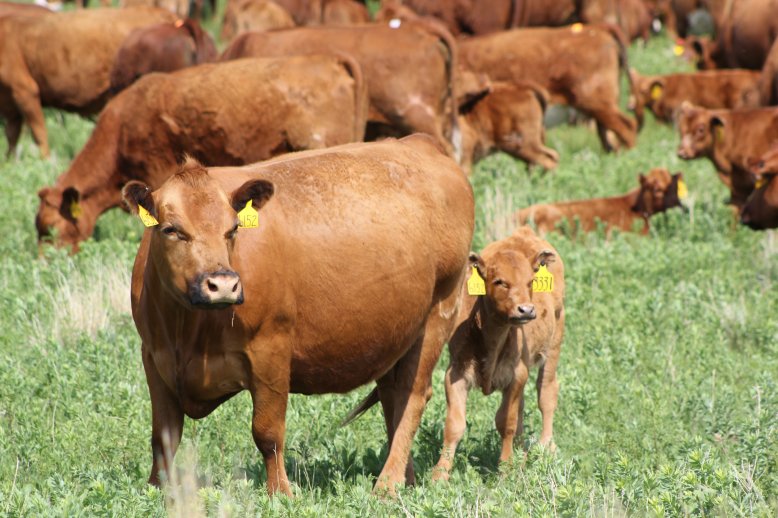
Matt Spangler, Ph.D., UNL Associate Professor and Beef Genetics Extension Specialist
Science, or rather advancements in science, allow for new or revised tools to aid in selection and management of beef cattle. It’s not hard to think of examples; artificial insemination protocol and the accompanying products (CIDRs, MGA, etc.), implants and feed additives, EPDs, economic selection indexes, genomic tools, and yes, crossbreeding strategies. These tools and strategies were developed through science. Cow sense is the ability to use science to improve the profitability of the respective beef centric enterprise. To adopt and correctly use science requires not only knowledge of the particular tool, but also detailed knowledge of the production environment and marketing goals.
If we focus on genetic tools and strategies, there are a few main ones that come to mind: Crossbreeding, EPDs, selection indexes, and DNA technology. Crossbreeding, I would argue, makes economic sense for every commercial producer. However, the breeds utilized and the structure of the mating system will vary not only by region but also by individual herds. The identification of environmental constraints (feed availability, climate, etc.; Table 1 http://go.unl.edu/5a2v) and marketing goals dictates the breeds that go into a crossing system. This is the cow sense part. Understanding these factors allows a producer to take full advantage of the science of heterosis (Table 2 http://go.unl.edu/hv74).
Expected Progeny Differences have been available to beef cattle producers for decades and are the fundamental backbone of genetic improvement. However, correct utilization of them requires knowledge of environmental constraints and production goals. Most seedstock producers know the frustration of having advised clientele relative to bull choice only to see said client leave the sale with the exact opposite of what they really needed. There are a few good examples of this misuse of science, and thus poor cow sense. Research has shown that cows with the genetic propensity to milk heavily require more nutrients year round, not just when they are milking. The National Research Council (NRC) data shows that a cow who produces 25 lbs. of milk at peak lactation requires 10% more feed energy than a cow producing 15 lbs. of milk at peak lactation. To see a 10% difference in feed energy with regards to mature weight it would require moving from a 1,000 lb. cow to a 1,200 lb. cow, or a change of 200 lbs. of body weight. We know that selection for increased yearling weights has led to larger mature cows that are more expensive to maintain. Moderating mature cow size and selecting for an optimal window of milk production is beneficial when it comes to cutting costs regardless of your production environment. However, in limited feed environments females with high maintenance energy requirements may also have difficulty maintaining an acceptable body condition score and rebreeding. Nugent et al. (1993) determined that with limited nutrient availability, breeds with a high genetic potential for milk production had longer anestrous periods which lead to lower conception rates during a fixed breeding season.
Another misuse of science is related to the choice of economic selection indexes. It is absolutely critical to fully understand the intended use (production goals) that are assumed by an index before you use them to select herd bulls. A great example is $B (Beef Value). This index a very useful terminal index. However, it would be an exceptionally poor choice for those who retain replacement heifers and sell calves at weaning. Understanding how selection tools, such as economic index values, fit your production goals takes cow sense.
There have been several lethal genetic defects that have been uncovered in the past few years. And there will be more identified in the future. Luckily, genomics has allowed for the development of tools to identify carriers. Is it safe for you to use a carrier bull? This takes detailed knowledge of your own cowherd and the risk of the cows being carriers themselves. The answer is not the same for everyone. Another very beneficial use of genomics is for paternity assignment. Many commercial producers turn out large cohort groups of bulls, with only the knowledge of what their EPDs were on the day they were purchased. However, we know that some are actually better than what their low accuracy EPDs suggest and others are worse. So what can you do when all bulls were supposed to be calving ease and during calving season you end up having to pull some calves. You could paternity test the problem (large birth weight) calves, identify the problem sire(s) and only use them on cows the next year.
Below are some related to genetic selection tools.
http://www.nbcec.org
http://www.beefefficiency.org
http://beef.unl.edu/